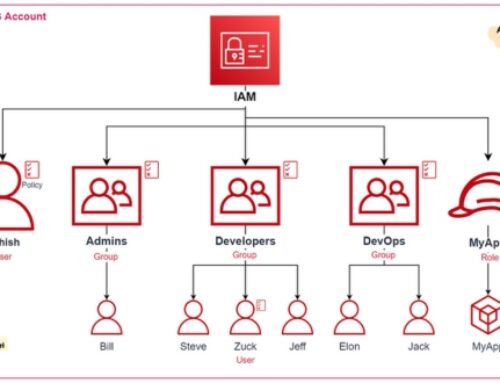Introduction to AWS Machine Learning Services

Understanding Machine Learning (ML)
In today’s data-driven world, extracting meaningful insights and making informed decisions requires powerful tools. Machine learning (ML) has emerged as a game-changer, enabling computers to learn and adapt without explicit programming. It analyzes vast amounts of data, identifies patterns, and makes predictions, transforming industries and creating new possibilities.
- Definition and Importance of ML:
Simply put, ML allows machines to learn from data, just like humans learn from experience. They are “trained” on large datasets, enabling them to recognize patterns, make predictions, and improve their performance over time. This opens doors to automating tasks, optimizing processes, predicting outcomes, and creating personalized experiences.
- Impact on Business Operations:
Across industries, ML is revolutionizing business operations. Here are some examples:
- Retail: Recommending products based on customer preferences, optimizing inventory management, and predicting demand.
- Finance: Detecting fraudulent transactions, assessing creditworthiness, and personalizing financial products.
- Manufacturing: Predicting equipment failures, optimizing production processes, and improving quality control.
- Healthcare: Analyzing medical images for early disease detection, predicting patient outcomes, and personalizing treatment plans.
Overview of AWS Machine Learning Services

Recognizing the transformative potential of ML, Amazon Web Services (AWS) offers a comprehensive suite of ML services. This collection empowers businesses of all sizes to leverage the power of ML, regardless of their technical expertise.
- Key Services and Significance:
- Amazon SageMaker: A fully managed platform for building, training, and deploying ML models at scale. It provides tools for every step of the ML lifecycle, from data preparation to model deployment, making ML accessible to everyone.
- Amazon Rekognition: Analyzes images and videos to extract visual information, enabling applications like object detection, facial recognition, and scene understanding.
- Amazon Transcribe: Converts speech to text in real-time, facilitating applications like call transcription, voice assistants, and automated speech recognition.
- Amazon Comprehend: Understands the meaning and sentiment of text, enabling applications like topic modeling, sentiment analysis, and named entity recognition.
- Amazon Forecast: Creates accurate forecasts using time-series data, assisting businesses in demand planning, inventory management, and resource allocation.
- Amazon Personalize: Personalized user experiences by recommending products, content, and offers based on individual preferences and behavior.
- Additional Services:
This list represents just a glimpse of the extensive AWS ML offering. Other notable services include Amazon Textract (extracts text from documents), Amazon Kinesis (analyzes real-time streaming data), and Amazon Machine Learning (develop custom ML models).
Benefits of Leveraging AWS ML

Choosing AWS for your ML journey offers several advantages:
- Scalability and Flexibility: Easily scale your ML applications up or down based on your needs, paying only for what you use.
- Security and Reliability: Benefit from AWS’s robust infrastructure and security features to ensure the privacy and integrity of your data.
- Wide Range of Services: Choose from a diverse set of pre-built ML services or build your own custom models with flexibility.
- Fast Time-to-Market: Accelerate your ML projects with pre-trained models and tools, reducing development time and resources.
- Reduced Costs: Avoid the upfront investments required for on-premises infrastructure and enjoy the benefit of pay-as-you-go pricing.
- Community and Support: Tap into a vast community of developers and access comprehensive documentation and support from AWS.
Conclusion:
The world of ML is brimming with opportunities, and AWS stands as a powerful platform to unlock its potential. Whether you’re a seasoned data scientist or just starting your ML journey, AWS offers the tools, services, and resources to empower you. By understanding the value of ML, exploring the suite of AWS ML services, and leveraging their advantages, you can transform your business operations, gain valuable insights, and create a competitive edge in today’s data-driven world.
AWS SageMaker: Simplifying ML Development
Introduction to Amazon SageMaker
In the ever-evolving landscape of machine learning (ML), building and deploying models can be a complex and time-consuming process. Amazon SageMaker steps in as a game-changer, offering a fully managed platform that simplifies every step of the ML development lifecycle. Whether you’re a seasoned data scientist or just starting your ML journey, SageMaker empowers you to get your models up and running quickly and efficiently.
- Streamlining the ML Workflow:
SageMaker eliminates the need for managing infrastructure, allowing you to focus on the core aspects of ML:
- Data Preparation: Clean, pre-process, and explore your data using SageMaker’s built-in tools or integrate with your existing data pipelines.
- Model Training: Choose from a wide range of pre-built algorithms or bring your own custom models for training on various computing resources (e.g., CPUs, GPUs).
- Model Tuning: Optimize hyperparameters for improved performance using SageMaker’s built-in tuning tools or integrate with external hyperparameter tuning services.
- Model Deployment: Deploy your trained models to production environments as web services, batch transformations, or real-time endpoints.
- Model Monitoring and Management: Monitor model performance, track metrics, and retrain models as needed for continuous improvement.
Features and Capabilities:
The AWS Sagemaker offers a comprehensive set of features to support your ML journey:
- Built-in Algorithms: Access a vast library of pre-trained algorithms covering various tasks like image classification, natural language processing, and anomaly detection. These algorithms can be used as-is or fine-tuned for your specific needs.
- Custom Model Training: Bring your own custom models built with popular frameworks like TensorFlow, PyTorch, and scikit-learn. SageMaker provides the infrastructure and tools to train and deploy these models seamlessly.
- Notebook Environment: Utilize Jupyter notebooks for data exploration, model development, and experimentation within a familiar environment.
- Model Deployment Options: Deploy your models as web services for real-time predictions, batch transformations for large-scale data processing, or endpoints for integration with other applications.
- Continuous Integration and Delivery (CI/CD): Automate your ML development workflow with SageMaker Pipelines, streamlining model training, deployment, and management.
- Security and Governance: Benefit from robust security features like encryption, access control, and auditability to ensure the privacy and integrity of your data and models.
Use Cases:
Organizations across industries are leveraging SageMaker to tackle diverse ML challenges:
- Retail: Predicting customer churn, recommending products, and personalizing marketing campaigns.
- Finance: Detecting fraudulent transactions, assessing creditworthiness, and optimizing risk management.
- Manufacturing: Predicting equipment failures, optimizing production processes, and improving quality control.
- Healthcare: Analyzing medical images for disease detection, predicting patient outcomes, and personalizing treatment plans.
- Media and Entertainment: Personalizing content recommendations, generating realistic images and videos, and analyzing customer sentiment.
Best Practices
- Start small and iterate: Begin with a simple project and gradually scale up as you gain experience.
- Utilize pre-built algorithms and notebooks: Leverage the available resources to accelerate your development process.
- Monitor your models: Track performance metrics and retrain models as needed to maintain accuracy and effectiveness.
- Version control your models: Manage and track different versions of your models for easier rollback and experimentation.
- Leverage the community: Utilize the vast resources available, including documentation, tutorials, and forums.
Conclusion:
AWS SageMaker empowers you to unlock the power of ML without the complexities of managing infrastructure. By providing a comprehensive set of tools, features, and best practices, SageMaker simplifies the ML development process, allowing you to focus on innovation and achieve faster time-to-market. Whether you’re a seasoned data scientist or just starting out, SageMaker can be your trusted partner in your ML journey.
Amazon Rekognition: Visual Analysis Made Easy
In today’s data-driven world, images and videos are a treasure trove of information. But extracting meaningful insights from these vast visual datasets can be a daunting task. Enter Amazon Rekognition, a powerful image and video analysis service from AWS that simplifies the process and unlocks the potential of your visual content.
Introduction to Amazon Rekognition:
Rekognition is a fully managed service that automatically analyzes images and videos, providing you with valuable insights without the need for complex machine learning expertise. It leverages deep learning technology to identify objects, people, scenes, activities, and even inappropriate content, making it a versatile tool for various applications.
Rekognition Features and Functions:
Rekognition offers a wide range of features to analyze your visual data:
- Object Detection: Identify and categorize objects within images and videos, from common objects like cars and furniture to specific items like logos and products.
- Facial Recognition: Recognize and analyze faces in images and videos, enabling applications like person identification, access control, and demographic analysis.
- Scene and Activity Detection: Understand the context of an image or video by identifying the scene (e.g., beach, airport) and the activities taking place within it.
- Text Detection: Extract text from images, enabling applications like document analysis, receipt processing, and data extraction.
- Content Moderation: Identify potentially inappropriate content in images and videos, helping to maintain safe and compliant online environments.
Use Cases of Amazon Rekognition:
Rekognition empowers businesses across diverse industries:
- Retail: Analyze product images for automatic tagging, personalize product recommendations, and improve search accuracy.
- Security and Surveillance: Identify individuals in security footage, detect suspicious activities, and enhance public safety.
- Media and Entertainment: Analyze video content for scene understanding, automatically generate captions, and personalize content recommendations.
- Manufacturing: Inspect products for quality control, automate visual inspections, and optimize production processes.
- Healthcare: Analyze medical images for disease detection, track patient progress, and personalize treatment plans.
Implementing Rekognition in Your Projects:
Integrating Rekognition into your projects is straightforward:
- Choose the right API: Rekognition offers different APIs for various functionalities, such as object detection, facial analysis, and text extraction.
- Prepare your data: Ensure your images and videos are in supported formats and resolutions.
- Use the API: Call the appropriate Rekognition API with your data and desired functionality.
- Process the results: Interpret the returned data, which includes detected objects, faces, text, and associated metadata.
Conclusion:
Amazon Rekognition offers a powerful and versatile solution for unlocking the insights hidden within your images and videos. With its wide range of features, ease of use, and diverse industry applications, Rekognition can empower you to automate tasks, gain deeper understanding of your visual data, and drive innovation within your organization. Remember, the possibilities are endless – explore Rekognition and discover how it can transform your visual analysis capabilities.
Amazon Comprehend: Unleashing the Power of Natural Language Processing
In today’s information age, text data is a goldmine of insights waiting to be unlocked. But manually analyzing vast amounts of text can be time-consuming and inefficient. Enter Amazon Comprehend, a powerful natural language processing (NLP) service from AWS that helps you extract meaning and gain valuable understanding from your text data.
Introduction to Amazon Comprehend:
Comprehend applies advanced machine learning models to analyze text, enabling you to:
- Understand sentiment: Identify the emotional tone of text, whether positive, negative, or neutral.
- Extract entities: Recognize and classify named entities like people, organizations, locations, and dates.
- Detecting languages: Identify the language of text automatically.
- Analyze key phrases: Discover and categorize important keywords and phrases within text.
- Classify text: Assign labels or categories to text based on its content.
Comprehend Features and Functions:
Comprehend offers a diverse set of features to meet your NLP needs:
- Pre-trained models: Access a library of pre-trained models for various tasks like sentiment analysis and entity recognition, eliminating the need for extensive training data.
- Customizable models: Train your own models on specific datasets for tailored analysis in unique domains or languages.
- Batch and real-time processing: Analyze text in bulk or in real-time as data streams arrive.
- Multiple languages supported: Process text in over 60 languages, expanding your reach to global audiences.
- Seamless integration: Integrate Comprehend with other AWS services like S3 and Lambda for streamlined workflows.
Applications of Amazon Comprehend:
Comprehend empowers businesses across industries to gain deeper insights from text:
- Customer service: Analyze customer reviews and feedback to understand sentiment, identify recurring issues, and improve customer satisfaction.
- Social media monitoring: Track brand mentions, analyze public opinion, and identify potential crises or opportunities.
- News and media analysis: Extract key information from news articles, track trends, and gain insights into current events.
- Document processing: Automate document classification, extract key data points, and improve information retrieval.
- Chatbots and virtual assistants: Enable chatbots to understand user intent and respond with relevant information or actions.
Integration and Deployment Tips for Comprehend:
Integrating Comprehend into your projects is straightforward:
- Choose the right API: Select the appropriate API based on your desired functionality, such as sentiment analysis or entity recognition.
- Prepare your text data: Ensure your text is in a supported format and free of errors.
- Use the API: Call the chosen Comprehend API with your text data and desired analysis.
- Process the results: Interpret the returned data, which includes sentiment scores, identified entities, and other relevant information.
Conclusion:
Amazon Comprehend empowers you to unlock the hidden potential within your text data. With its diverse features, ease of use, and wide range of applications, Comprehend can help you gain deeper customer insights, improve operational efficiency, and make data-driven decisions that drive your business forward. So, unleash the power of NLP with Comprehend and discover how it can transform your text analysis capabilities.
Amazon Forecast: Predictive Analytics Made Accessible
Introduction to Amazon Forecast
Amazon Forecast stands at the forefront of predictive analytics, offering businesses a powerful tool for time-series forecasting. As a service within the AWS ecosystem, Amazon Forecast enables organizations to harness the potential of historical data to make accurate predictions about future trends and outcomes.
Features and Functions of Amazon Forecast
Delving into the capabilities of Amazon Forecast unveils a suite of features designed to streamline the forecasting process. From seamless data import to sophisticated model training and efficient forecast generation, Amazon Forecast empowers users with the tools necessary to extract meaningful insights from their time-series data. The service employs advanced machine learning algorithms to analyze patterns and make precise predictions, making it a versatile solution for a wide range of applications.
Real-world Applications of Amazon Forecast
The impact of Amazon Forecast extends across diverse industries, revolutionizing the way organizations approach demand forecasting and planning. Retailers, manufacturers, and logistics providers, among others, leverage Amazon Forecast to anticipate future demand for products and services. By accurately predicting demand fluctuations, businesses can optimize inventory management, reduce costs, and enhance overall operational efficiency. The real-world applications of Amazon Forecast underscore its adaptability and effectiveness in addressing the unique forecasting needs of different sectors.
Implementing Amazon Forecast in Your Business
Implementing Amazon Forecast in your business involves a strategic approach to maximize its predictive analytics capabilities. Setting up the service involves careful consideration of data sources, model training parameters, and forecasting goals. Best practices include fine-tuning the model based on specific business requirements, ensuring data quality, and regularly updating models to adapt to changing patterns. By following these implementation best practices, businesses can unlock the full potential of Amazon Forecast, transforming it into a valuable asset for informed decision-making and future planning.
AWS DeepLens: Bringing Machine Learning to the Edge
Introduction to AWS DeepLens
AWS DeepLens emerges as a groundbreaking solution, seamlessly integrating machine learning into edge computing and computer vision applications. As a specialized device within the AWS ecosystem, DeepLens empowers developers and businesses to bring the power of machine learning models to the edge, fostering innovation in various domains.
Features and Capabilities of DeepLens
Delving into the core of AWS DeepLens reveals a rich array of features and capabilities that set it apart. Boasting robust hardware specifications, the device is equipped with pre-trained models and supports the deployment of custom models. This combination of hardware and software process ensures that DeepLens is a versatile tool for implementing machine learning at the edge. Developers can harness its capabilities to address a myriad of use cases, from image recognition to object detection.
Use Cases and Applications of AWS DeepLens
The real-world impact of AWS DeepLens is evident across diverse applications and industries. Examples abound in IoT, where DeepLens enhances edge devices with advanced visual recognition capabilities. In surveillance, the device plays a crucial role in identifying and analyzing visual data, while in automation projects, it enables the integration of machine learning directly into edge devices. The varied use cases of AWS DeepLens highlight its adaptability and potential to transform industries reliant on visual data processing.
Tips for Building Projects with DeepLens
Embarking on projects with AWS DeepLens requires a strategic approach for developers and enthusiasts. Key tips include understanding the device’s capabilities, exploring pre-trained models, and experimenting with custom model deployments. Additionally, guidance on project ideation, data preparation, and model fine-tuning ensures a smoother development process. As developers delve into the world of AWS DeepLens, these tips serve as valuable insights, aiding in the creation of innovative projects that leverage the power of machine learning at the edge.
AWS Machine Learning Services Pricing and Cost Optimization
Understanding AWS ML Pricing Model
Navigating the realm of AWS Machine Learning Services entails a nuanced understanding of the pricing structures associated with each offering. This section provides a comprehensive overview of the diverse pricing models employed by various AWS ML services. By breaking down the intricacies of pricing, users gain insights into the financial aspects of implementing machine learning solutions on the AWS platform.
Cost Optimization Strategies for ML Workloads
In the pursuit of efficiency and value, cost optimization becomes a pivotal consideration for organizations leveraging AWS ML services. This segment offers practical tips and strategies for minimizing costs while maximizing the impact of machine learning workloads. From exploring reserved instances to implementing spot instances strategically, these insights empower users to make informed decisions that align with their budgetary constraints.
Budgeting and Resource Allocation for ML Initiatives
Effectively managing budgets and allocating resources is fundamental to the success of machine learning initiatives. This section delves into best practices for budgeting and resource allocation within the context of ML projects on AWS. By providing guidance on setting realistic budgets, forecasting expenses, and efficiently allocating resources, users gain a holistic understanding of how to navigate the financial aspects of their ML endeavors.
As organizations delve into the world of AWS Machine Learning Services, a nuanced grasp of pricing, coupled with strategic cost optimization and resource allocation, becomes instrumental. This section equips users with the knowledge needed to navigate the financial landscape, ensuring that their machine learning initiatives not only deliver impactful results but also remain financially sustainable.
Future Trends and Innovations in AWS Machine Learning
Emerging Technologies in ML
Diving into the forefront of innovation, this section explores emerging technologies that are shaping the landscape of machine learning. From the rise of AutoML, which automates the machine learning model development process, to the advancements in reinforcement learning and federated learning, users gain insights into the cutting-edge trends that are redefining the field.
Anticipated Developments in AWS ML Services
As AWS continues to be a trailblazer in the realm of machine learning services, this segment offers predictions on how these offerings might evolve in the coming years. By forecasting the anticipated developments within AWS ML services, users can prepare for the future and stay ahead of the curve in adopting the latest tools and features offered by the platform.
Opportunities and Challenges in the ML Landscape
Reflecting on the broader implications of advancements in machine learning, this section delves into the opportunities and challenges that businesses and society may encounter. From the potential for transformative breakthroughs to the ethical considerations surrounding AI, users gain a holistic understanding of the evolving ML landscape and how it might impact their endeavors.
In navigating the future of AWS Machine Learning, staying abreast of emerging technologies, anticipating developments within AWS ML services, and understanding the broader landscape’s opportunities and challenges are paramount. This section equips users with the foresight needed to navigate the evolving world of machine learning on AWS successfully.
Conclusion: Empowering Innovation with AWS Machine Learning
AWS Machine Learning stands as a transformative force, empowering innovation across industries. As organizations embrace the capabilities of Amazon SageMaker, comprehend the potential of Amazon Forecast, and explore the intricacies of AWS DeepLens, they embark on a journey of unprecedented possibilities. The pricing insights provided equip businesses to optimize costs while maximizing the value derived from machine learning initiatives.
Looking ahead, the future trends and innovations in AWS Machine Learning promise to reshape the technological landscape. The emergence of AutoML, reinforcement learning, and federated learning heralds a new era of automation and sophistication. Anticipating developments within AWS ML services ensures that users are prepared to leverage the latest offerings and stay at the forefront of technological advancements.
As opportunities and challenges unfold in the ever-evolving ML landscape, AWS remains a cornerstone for those seeking to harness the power of machine learning. From groundbreaking applications to ethical considerations, this technology not only transforms business operations but also shapes the ethical and societal implications of artificial intelligence.
AWS Machine Learning is not just a suite of services; it’s a catalyst for innovation, offering organizations the tools and insights needed to unlock the full potential of their data. By embracing AWS’s comprehensive ecosystem, businesses can propel themselves into a future where machine learning becomes a cornerstone of their success.
Amazon SageMaker is a fully-managed service that simplifies the process of building, training, and deploying machine learning models. It provides an integrated development environment for end-to-end machine learning workflows.
Amazon Forecast is designed for time-series forecasting. By importing historical data and utilizing Forecast’s capabilities, businesses can generate accurate demand forecasts for planning inventory, staffing, and other critical operations.
AWS DeepLens is a deep learning-enabled video camera for developers. It brings machine learning capabilities to the edge, allowing real-time inference on the device, making it ideal for applications like computer vision in IoT, surveillance, and automation projects.
AWS Machine Learning services typically have diverse pricing models, including pay-as-you-go, instance-based, or feature-specific pricing. Understanding these models is crucial for effective cost management.
Cost optimization strategies for machine learning workloads include selecting the right instance types, utilizing spot instances, and managing resources efficiently. It’s essential to align costs with the specific needs of the ML project.








